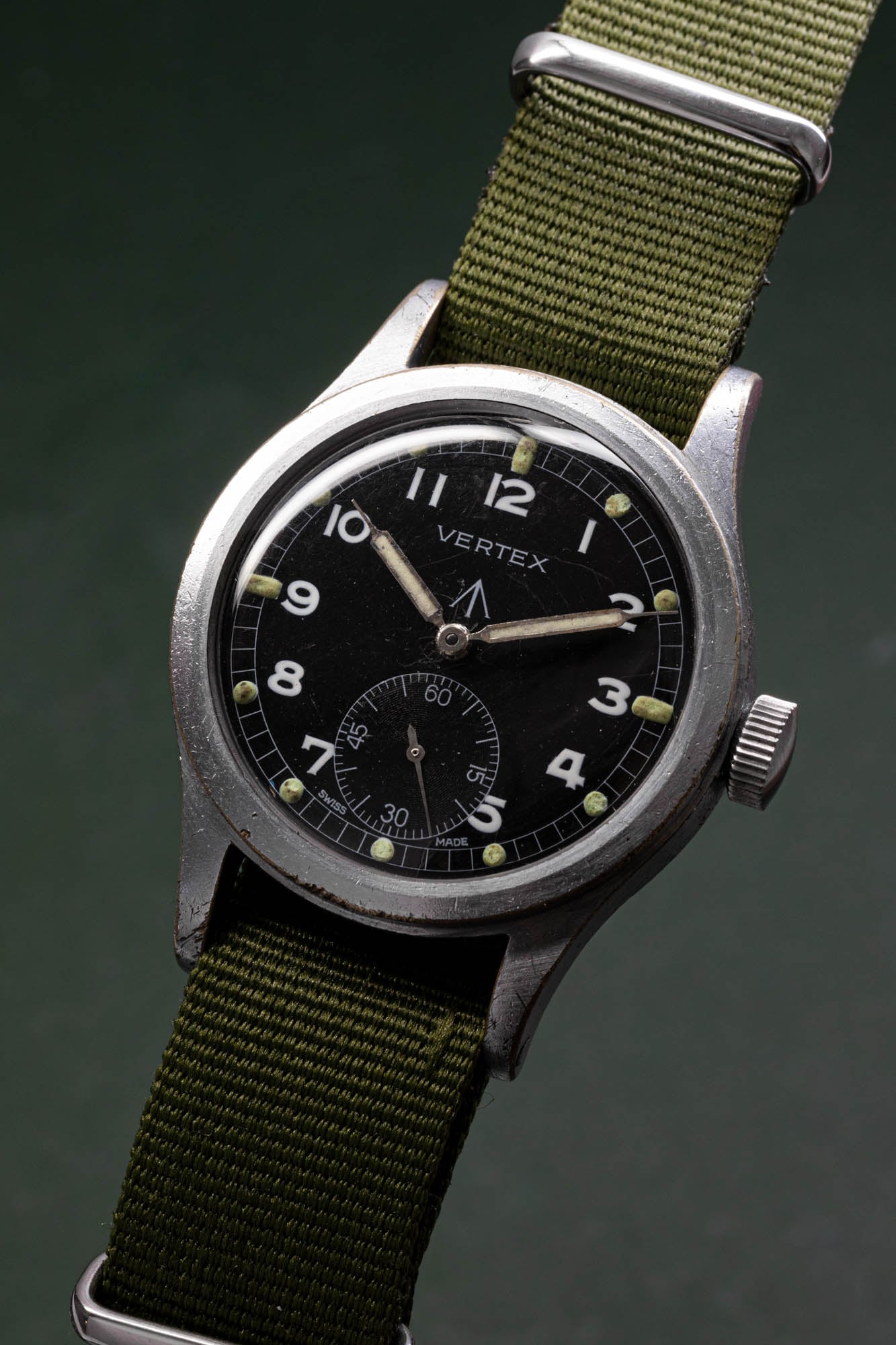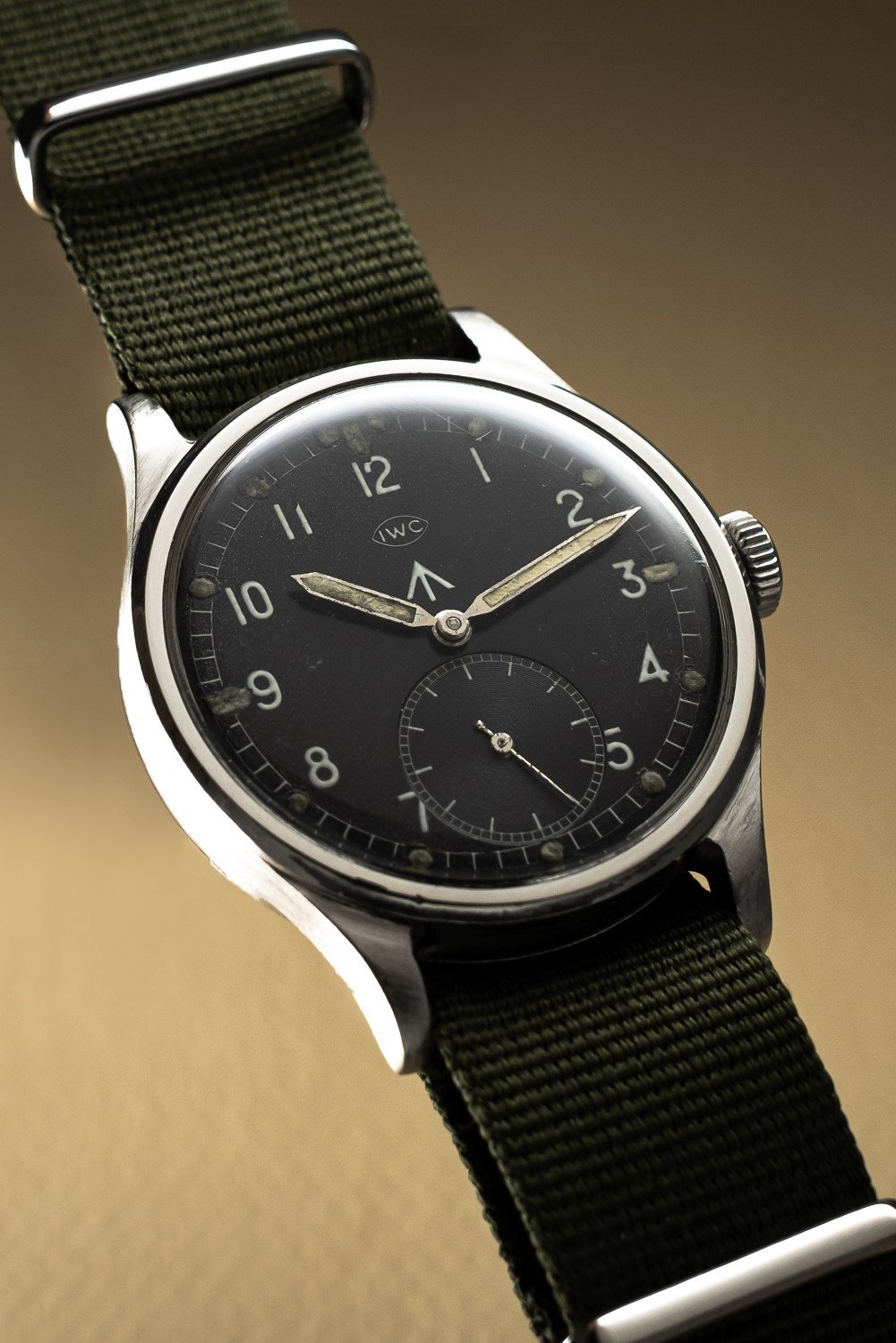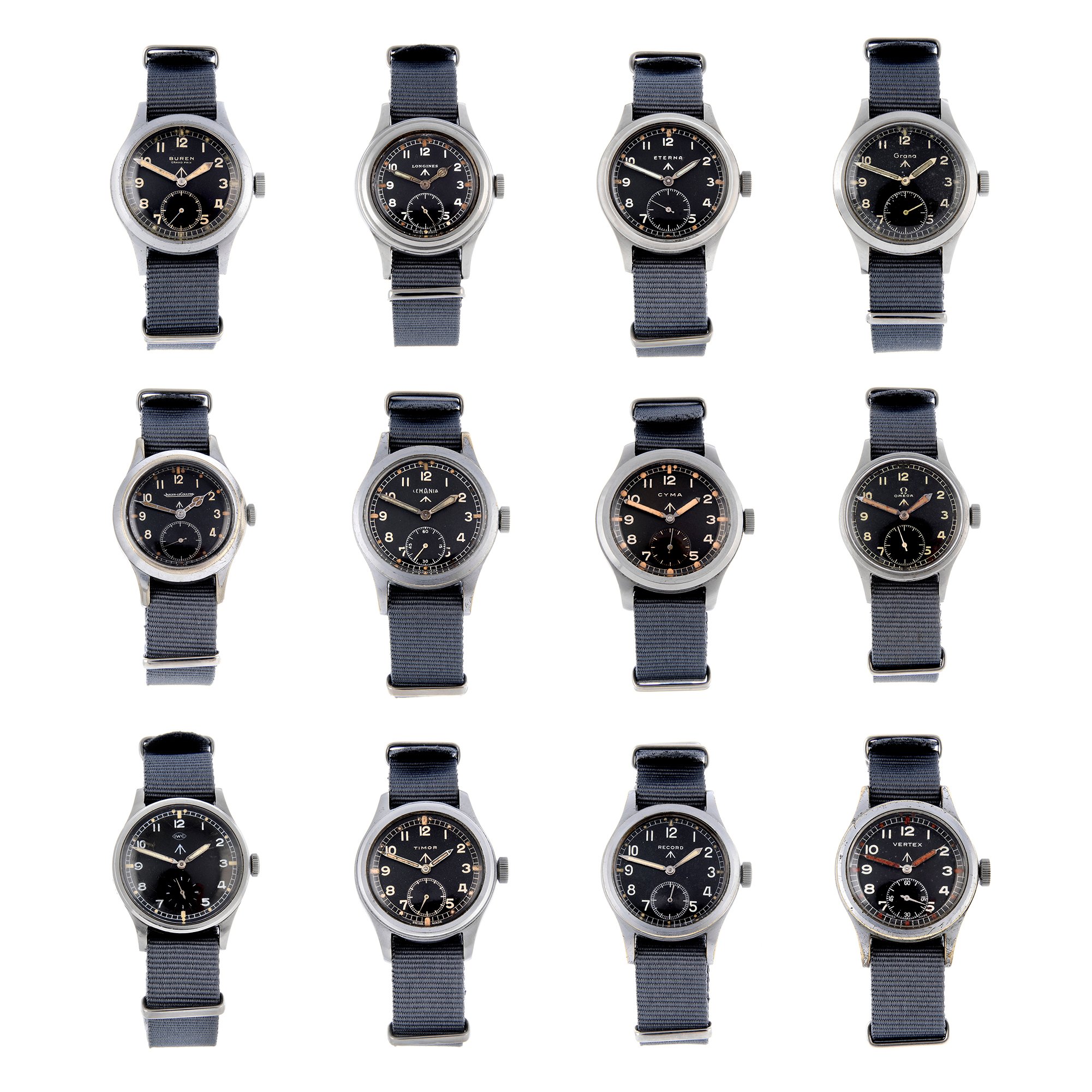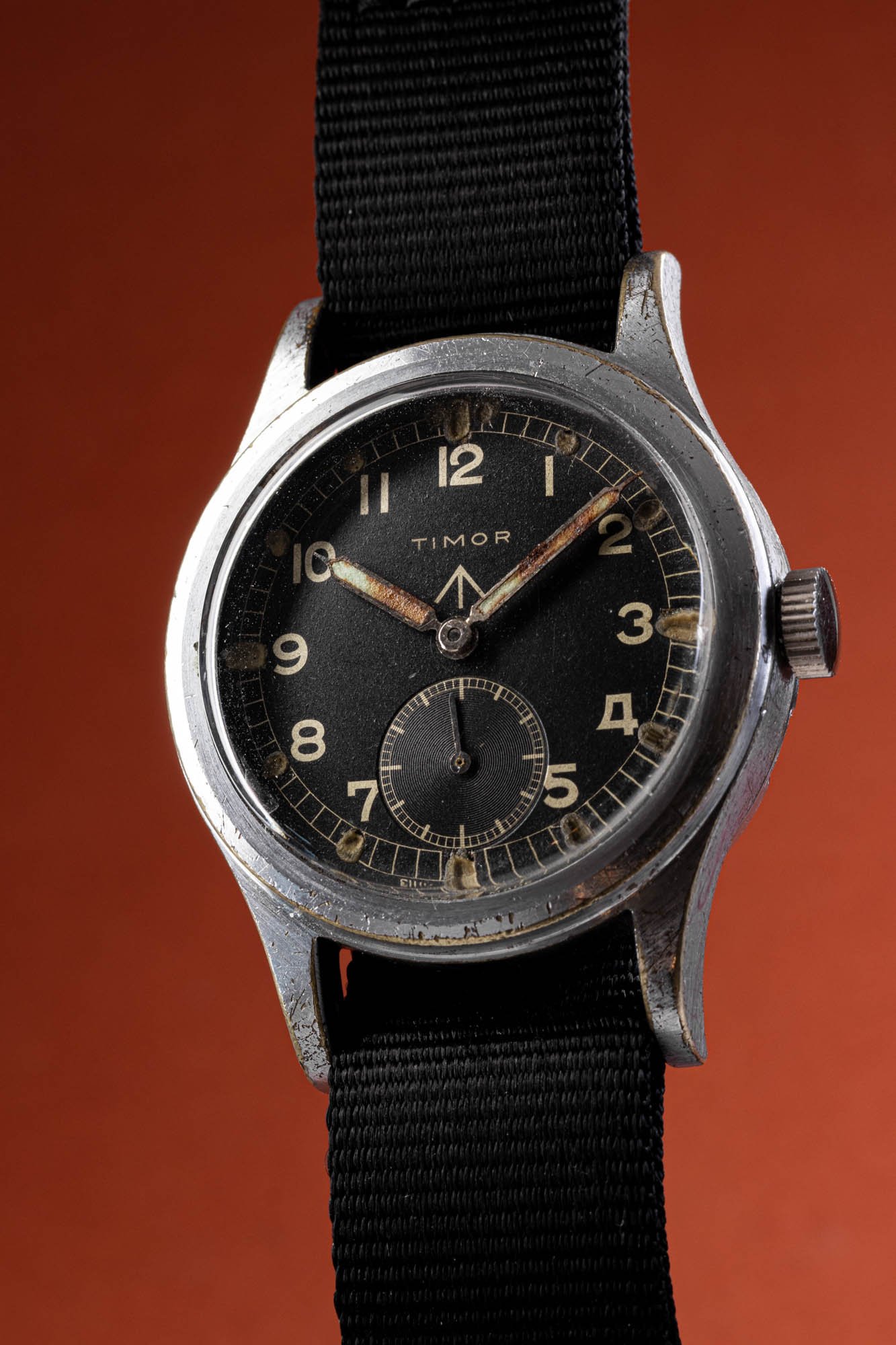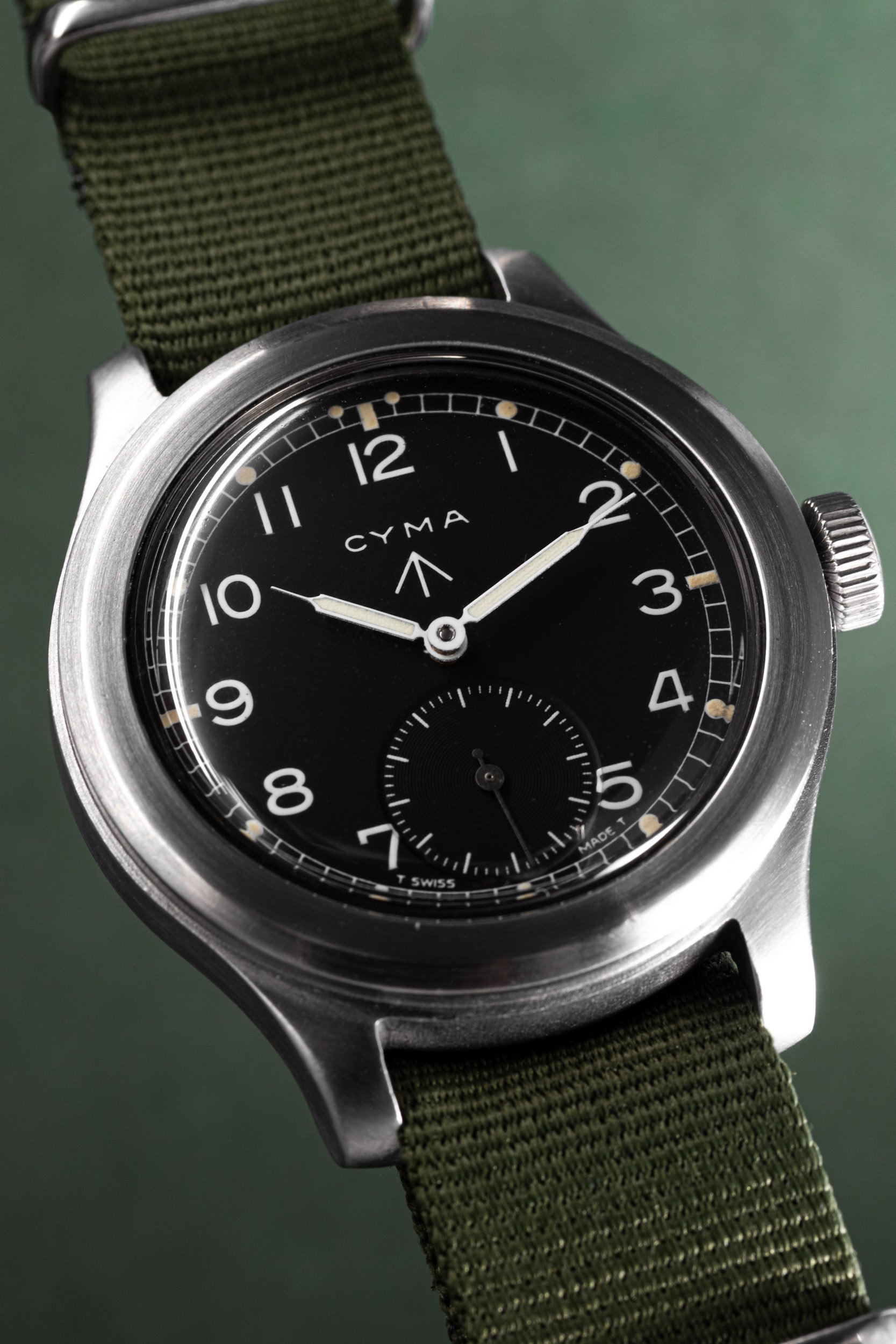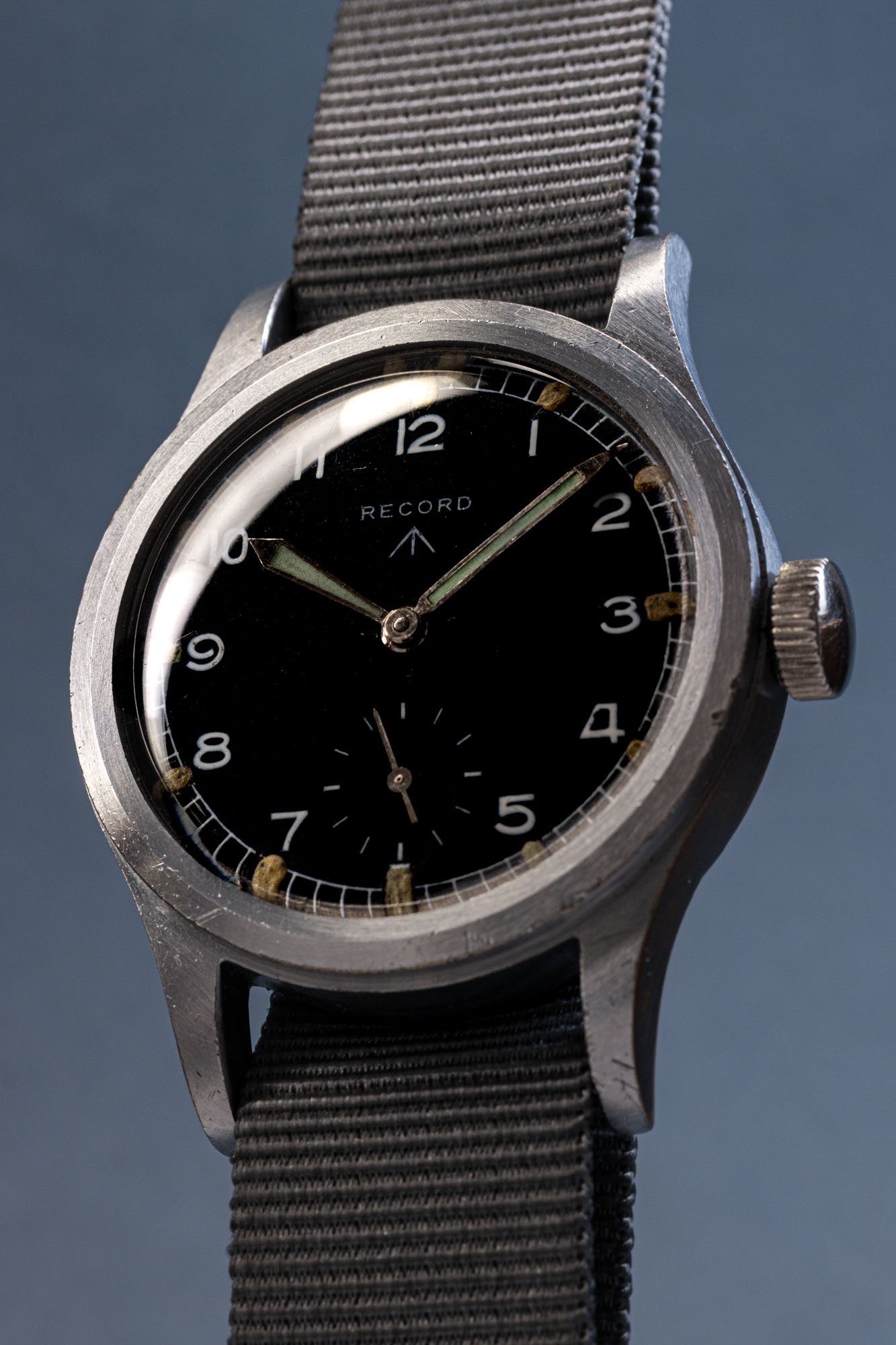A Brief History Of The Dirty Dozen Military Wristwatches
The “Dirty Dozen” is a series of watches from World War II that hardly require an introduction. Lately, however, we have seen a bit of a resurgence of the style for which they set the template. There are straight reissues from brands like Timor and Vertex. The still-popular IWC Mark series is another that can trace its roots back to the Dirty Dozen. Even the Formex Field Automatic that Vincent reviewed on Fratello last week is clearly built on Dirty Dozen DNA.
So we felt it was long overdue for us to do a brief overview of the Dirty Dozen. The following may all be familiar to the more seasoned watch geeks among you, but it never hurts to do a little refresher course occasionally, does it? I already did something of a precursor to this article in a recent Dirty Dozen-themed installment of Pre-Owned Spotlight. Today, we will dig a little deeper.
When Dirty Dozen was Dirty Baker’s Dozen
The Dirty Dozen story starts when the British Ministry of Defence commissioned a watch for its forces in 1945. The aim was to find a replacement for the old A.T.P. (Army Trade Pattern) watches ordered in 1939. The MoD turned to Swiss watchmakers since local ones lacked the capacity, especially once they were converted to armaments and other wartime production.
The brief described waterproof, shockproof, and accurate wristwatches. Rather than A.T.P., these were labeled W.W.W. for “Wrist Watch Waterproof.” Necessary specifications included a black dial, Arabic numerals, and nighttime readability. Furthermore, there was to be a railroad minute track and a “shatterproof” crystal. The brief is clearly distinct from the earlier A.T.P. watches. Those featured white or silver dials. The A.T.P.s were also notably smaller at 30–34mm, compared to the 35–38mm range of the W.W.W.s.
Thirteen companies were asked to supply these new watches — Buren, Cyma, Enicar, Eterna, Grana, Jaeger-LeCoultre, Lemania, Longines, IWC, Omega, Record, Timor, and Vertex. Twelve of them ended up supplying their versions of the watches in the second half of 1945. The one company that failed to do so was Enicar, resulting in a proper dozen.
A nickname from a later age
The nickname “Dirty Dozen” was not applied to these watches until decades later. The title is derived from a 1967 movie of the same name. The Dirty Dozen is a film about 12 criminals assigned a special mission during World War II. We see, among others, Lee Marvin and Charles Bronson star in this epic directed by Robert Aldrich.
The movie is often considered the zenith of a genre from the era that romanticizes World War II. The atrocities and suffering are dialed down in favor of heroics and action. Quentin Tarantino made an ode to the genre in Inglourious Basterds (2009). In fact, some scenes are direct references to The Dirty Dozen.
I mention this because there is some of that romanticizing going on with the Dirty Dozen watches as well. They are now treated like collectibles. Especially the rarer versions — we will get to that — command serious money now. This is a discussion for another day, but one can have doubts about wearing these as fashion items. That is not to say there aren’t sincere motives for collecting them, but it is worth being mindful of.
A dozen different Dirty Dozen watches
The brief from the MoD left quite a bit of room for interpretation, as we can see from the resulting watches. No two versions look alike under scrutiny. For starters, sizes varied quite a bit. The Grana, IWC, JLC, Omega, and Vertex versions are the smallest, measuring 35mm. The Longines is the largest at 38mm.
Another distinguishing feature is the handset. We see variations from the narrow syringe-style hands of the Vertex to the large cathedral handsets of the Longines and JLC. The dials are nowhere near the same, either. The numerals are different — just let your eye flow across all the 4s, for instance. The sub-dials for the running seconds are different sizes, and some feature numerals where others don’t. All feature the government-specified arrowhead, but even that is executed in different shapes.
The cases vary quite a bit as well. Some are stainless steel, whereas others are chrome-plated. To find a good, unrestored example of the latter nowadays is nearly impossible. The case shape itself is also different across the manufacturers. We see stepped bezels, domed bezels, flat bezels, and sloped bezels. Lastly, all were fitted with a screw-in case back except for the IWC, the back of which was snap-on.
The Dirty Dozen in service
Since the watches were only delivered in the second half of 1945, many did not see that much action. A total of around 150,000 watches were produced. They primarily landed with specialist units, such as radio operators. While many did not, large numbers also did end up on the battlefield.
A small number of W.W.W.s was salvaged by the MoD after the war. Interestingly, these were then sold to other armed forces. Some went to the Dutch and Indonesian armies, others to the Pakistani military. Some of these watches saw action in Indonesia during the decolonization from the Netherlands. Most W.W.W.s feature two serial numbers on the case back, one military and one civilian. These resold versions received a third serial number from their new owners. This makes Dirty Dozen watches with three serials extra collectible today.
Naturally, these watches went through significant abuse. During WWII, they would be serviced by the Corps of Royal Electrical and Mechanical Engineers, or REME. After the war, many were stripped of their radium lume. To find one in its original condition, then, is a challenge. You can tell from the pictures in this article that many are hard-worn and were fixed improvisationally along the way.
Rarity
I mentioned that about 150,000 of these were produced in total. Each manufacturer supplied as many as it could, which varied considerably. Omega and Record managed to supply 25,000 pieces each. On the other end of the spectrum, Grana made somewhere between 1,000 and 5,000 units. Add to this the significant number that was lost or destroyed, and you end up with some seriously rare watches, especially if you are looking for ones in good condition.
These are the estimated numbers produced per manufacturer:
- Buren: 11,000
- Cyma: 20,000
- Eterna: 5,000
- Grana: 1,000–1,500
- IWC: 6,000 (Number confirmed by IWC’s records)
- Jaeger-LeCoultre: 10,000 (Number confirmed by JLC’s records)
- Lemania: 8,000
- Longines: 5,000
- Omega: 25,000 (Number confirmed by Omega’s records)
- Record: 25,000
- Timor: 13,000
- Vertex: 15,000
Closing thoughts
The story of the Dirty Dozen watches is one of those bits of horological history that never ceases to fascinate watch enthusiasts. Beyond the history, it sure helps that these are beautiful watches in their own right. There is honesty in purely functional and efficient designs like this. Such design tends to age well.
I think it is easily understandable that watch aficionados are drawn to watches like this. They predate a watch world that sometimes seems to focus on hype and collectibility first and actual watches second. The Dirty Dozen is a display of twelve great watch brands scrambling to make something tough and legible for those who would risk their lives for the freedom of others. I can see why that is more attractive than today’s slick CEO presentations at fancy watch fairs.
I do, however, feel it is good to be mindful of the past of these watches. What makes them attractive also makes them historically sensitive. To use them merely as a fun fashion accessory does not do justice to what they represent. This is not to say that one should not collect them or strive to own one. This is complicated moral territory that every collector must navigate individually. In any case, the Dirty Dozen surely deserves a prominent spot in the horological hall of fame.
Find and follow me on Instagram: @time_travelers_journal
Featured (top) image courtesy of Watches of Knightsbridge. Also, a big thanks to Amsterdam Watch Company for kindly providing photography.

